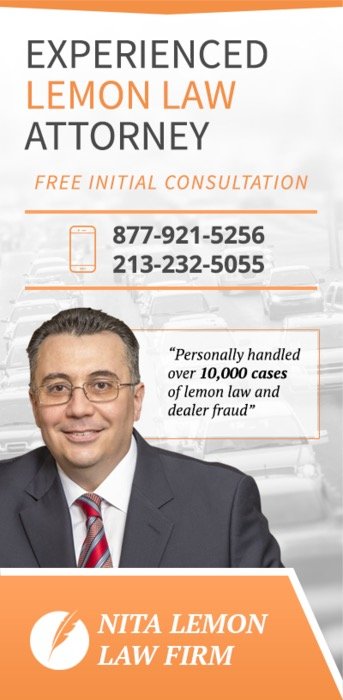How Does No-Fault Car Insurance Work?

The term “no-fault insurance” seems to imply that you’ll be covered by insurance after a car accident regardless of who was at fault in causing the crash. In other words, even if your own negligence caused the crash, you can still receive insurance coverage for your medical bills, as well as lost wages if you’re unable to work because of the injury. Sound good? Yes and no. The benefits provided by no-fault coverage are limited and may not meet all your needs, but unless your injury is “serious” beyond a certain threshold defined in the law, you won’t be able to pursue a negligence claim against the other driver, even when the accident was wholly their fault.
A dozen states currently have no-fault insurance laws for car accidents: Florida, Hawaii, Kansas, Kentucky, Massachusetts, Michigan, Minnesota, New Jersey, New York, North Dakota, Pennsylvania and Utah. If you live in one of these no-fault states, it’s important you understand what no-fault insurance covers, what it doesn’t, what counts as a “serious” injury, and why you may need to contact a lawyer depending on the details of the accident.
What no-fault insurance covers
Most no-fault policies provide a level of Personal Injury Protection (PIP) coverage when you are hurt in an accident. The details of the benefits vary from state to state. In New Jersey, a basic policy will cover $15,000 in eligible medical expenses per person, per accident. If out of work or disabled due to the crash, the injury victim can also receive lost wages up to $100 a week and a maximum of $5,200. Compensation is also available for essential services the victim cannot provide, at a rate of $12 per day up to $4,380. If the accident was fatal, family members can receive death benefits up to $5,200 and $4,380, as well as up to $1,000 in funeral and burial expenses.
Next door in New York, drivers carry a minimum of $50,000 in PIP coverage, which covers medical expenses as well as lost income equal to the lesser of $2,000 a month or 80% of wages, for as long as three years. As much as $25 per day is also available to cover transportation to the doctor, child care during medical appointments, in-home help or other costs related to the accident.
Basic PIP coverage in Florida, another no-fault insurance state, provides $10,000 that can be used to cover 80% of medical expenses and 60% lost wages, after meeting a deductible. If you’re living in a no-fault state, it’s important to understand what’s covered by your policy, so you know what you’re getting.
What no-fault insurance doesn’t cover
The glaring difference between no-fault benefits and what one can receive in a civil negligence claim is the availability of so-called non-economic damages, such as pain and suffering, emotional distress, mental anguish, loss of quality of life, loss of consortium (intimate spousal relations), etc. These types of damages are generally available in tort claims, but they are omitted from no-fault benefits. However, even no-fault insurance states allow tort claims for injuries that exceed a certain threshold and are considered serious enough to warrant a civil claim.
As with PIP coverage, the ability to file a tort claim in a no-fault insurance state varies greatly from state to state. Each state has its own threshold that determines whether an injury is deemed serious enough to allow the victim to step outside the no-fault system and sue the negligent driver. Some states have a monetary threshold, meaning you have to incur a certain amount in expenses before you can sue. The threshold amount in monetary threshold states ranges from $1,000 in Kentucky to $4,000 in Minnesota. Kansas and Hawaii peg the monetary threshold to the amount of your PIP policy benefit.
Other states have a verbal threshold instead of a monetary one. In these states, your injury must meet one of a number of criteria to be considered a “serious” injury worthy of filing a tort claim. Here is a look at the verbal threshold in a few of the states we discussed earlier: New Jersey, New York and Florida.
New Jersey verbal threshold
- Death
- Dismemberment
- Loss of a fetus
- Significant disfigurement or scarring
- Displaced fractures
- Permanent injury – requires the doctor to certify that the injury will never heal properly and to provide objective evidence that supports this conclusion
New York
- Death
- Dismemberment
- Significant disfigurement
- A fracture
- Loss of a fetus
- Permanent loss of use of a body organ, member, function or system
- Permanent consequential limitation of use of a body organ or member
- Significant limitation of use of a body function or system
- A medically determined injury or impairment of a non-permanent nature which prevents the injured person from performing substantially all of the material acts which constitute such person’s usual and customary daily activities for not less than ninety days during the one hundred eighty days immediately following the occurrence of the injury or impairment
Florida
- Permanent injury within a reasonable degree of medical probability
- Significant and permanent scarring or disfigurement
- Significant and permanent loss of an important bodily function
- Death
Because of this threshold, no-fault insurance policies are sometimes referred to as lawsuit threshold or limited tort policies, as opposed to full tort states with no restrictions on the right to sue after an accident. Some states, like New Jersey, are “choice no-fault” states, meaning drivers can choose either a limited tort or a full tort policy.
Do I Need a Car Accident Lawyer if I Live in a No-Fault Insurance State?
If you are only collecting no-fault benefits from your PIP coverage, you may not need the assistance of a personal injury attorney or car accident lawyer. Just make sure you notify your insurance company in a timely manner and cooperate with all of their requests for information, including if they send you for a medical exam with one of their doctors. The steps you take at this stage can impact your benefits greatly. In Florida, for instance, if your actions do not demonstrate that you had an “emergency medical condition” as defined in the law, that $10,000 in PIP benefits gets capped at only $2,500.
As with any time you are making a claim for insurance benefits, the insurer may try to deny your claim or pay you less in benefits than you think you are owed. If you think this is happening to you, it cannot hurt to bring a lawyer on board to represent you. They won’t charge anything to represent you and will take their fee as a percentage of what they recover for you. In most cases, the additional compensation an attorney can recover makes it worthwhile to hire one. If you believe your injuries may take you beyond the lawsuit threshold, you should definitely have a lawyer represent you before you file a claim. Otherwise, you are unlikely to be successful or recover the full value of your claim.



